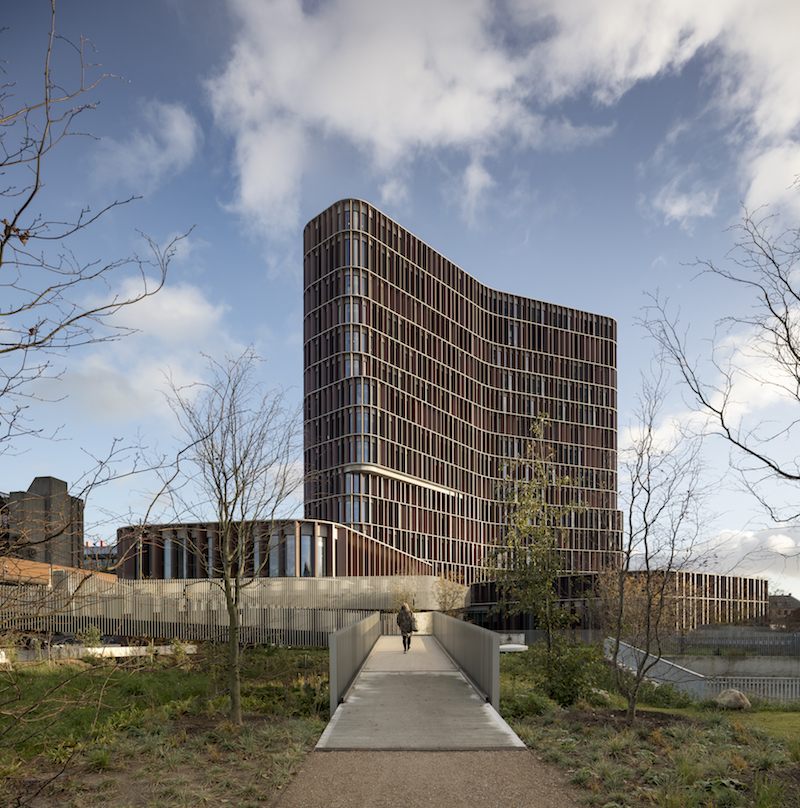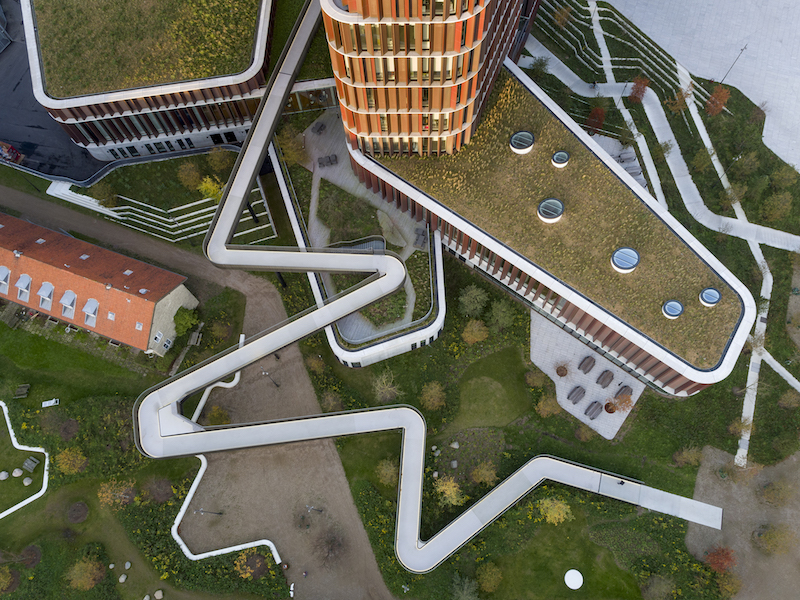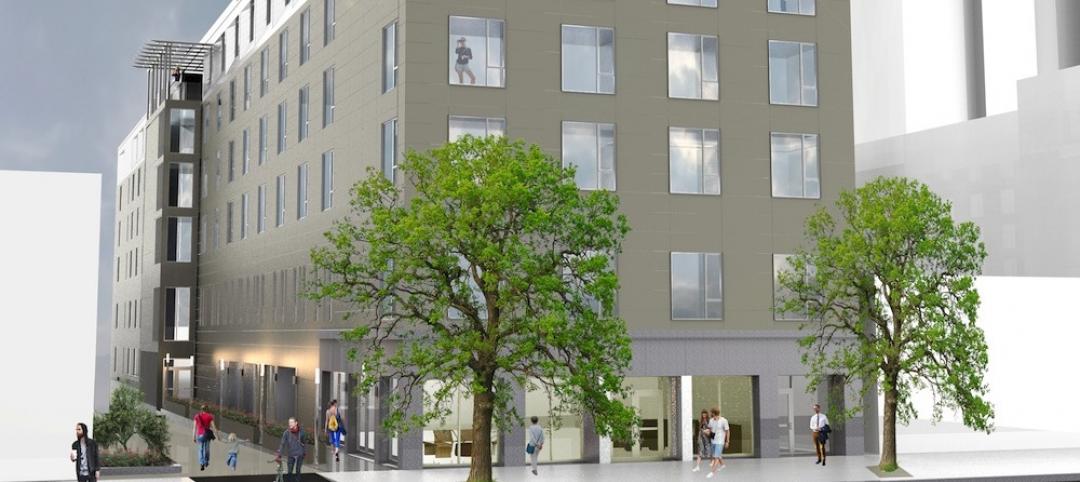Maersk Tower is a new 42,700-sm research building designed and built as an extension of Panum, the University of Copenhagen’s Faculty of Health Sciences. The new building includes research and teaching facilities and a conference center with auditoriums and meeting rooms.
The tower rests on a low base that comprises all common facilities. The base is publicly accessible and appears open and in close dialogue with the surrounding environment thanks to its glass façade. The research functions and laboratories are located in the tower itself and are bound to each other in a loop that provides short distances between locations and improves the possibility of collaboration.
 Photo: Adam Mørk.
Photo: Adam Mørk.
An open atrium and a spiral stairway visually and physically connects each of the building’s fifteen floors. A “Forskertorv” exists around the staircase and creates a natural meeting place and community room for the building’s users.
Maersk Tower’s exterior façade is divided into a grid structure of floor-high copper-plated shutters. The shutters act as a climate guard that moves and shields direct sunlight and overheating. The shutters also help to break down the tower’s large scale. Adding to the energy efficiency of the building, the laboratories capture waste energy and reuse it for other purposes.
 Photo: Adam Mørk.
Photo: Adam Mørk.
Surrounding the tower is a publicly available urban campus park equipped with a “floating trail” that leads pedestrians and cyclists across part of Maersk Tower and creates a new connection between Nørre Allé and Blegdamsvej.
 Photo: Adam Mørk.
Photo: Adam Mørk.
Related Stories
Office Buildings | Jun 10, 2016
Form4 designs curved roofs for project at Stanford Research Park
Fabricated of painted recycled aluminum, the wavy roofs at the Innovation Curve campus will symbolize the R&D process and make four buildings more sustainable.
University Buildings | Jun 9, 2016
Designing for interdisciplinary communication in university buildings
Bringing people together remains the main objective when designing academic projects. SRG Design Principal Kent Duffy encourages interaction and discovery with a variety of approaches.
Building Team Awards | May 31, 2016
Gonzaga's new student center is a bustling social hub
Retail mall features, comfortable furniture, and floor-to-ceiling glass add vibrancy to the new John J. Hemmingson Center.
University Buildings | May 26, 2016
U. of Chicago approves Diller Scofidio + Renfro design for new campus building
With a two-story base and 165-foot tower, the Rubenstein Forum will have room for informal meetings, lectures, and other university events.
University Buildings | Apr 27, 2016
SmithGroupJJR’s Electrical and Computer Engineering Building named 2016 Lab of the Year
Sustainable features like chilled beams and solar screens help the University of Illinois research facility use 50% less energy than minimum building energy efficiency standards.
University Buildings | Apr 25, 2016
New University of Calgary research center features reconfigurable 'spine'
The heart of the Taylor Institute can be anything from a teaching lab to a 400-seat theater.
University Buildings | Apr 13, 2016
Technology defines growth at Ringling College of Arts & Design
Named America's “most wired campus" in 2014, Ringling is adding a library, visual arts center, soundstage, and art museum.
University Buildings | Apr 13, 2016
5 ways universities use new buildings to stay competitive
From incubators to innovation centers, schools desire ‘iconic gateways’ that appeal to students, faculty, entrepreneurs, and the community.
University Buildings | Apr 4, 2016
3 key trends in student housing for Boston’s higher education community
The city wants to add 18,500 student residence beds by the year 2030. CannonDesign's Lynne Deninger identifies three strategies that will help schools maximize value over the next decade or so.
University Buildings | Mar 15, 2016
Behnisch Architekten designs Harvard’s proposed Science and Engineering Complex
The 497,000-sf building will be the home of the John A. Paulson School of Engineering and Applied Sciences.

















